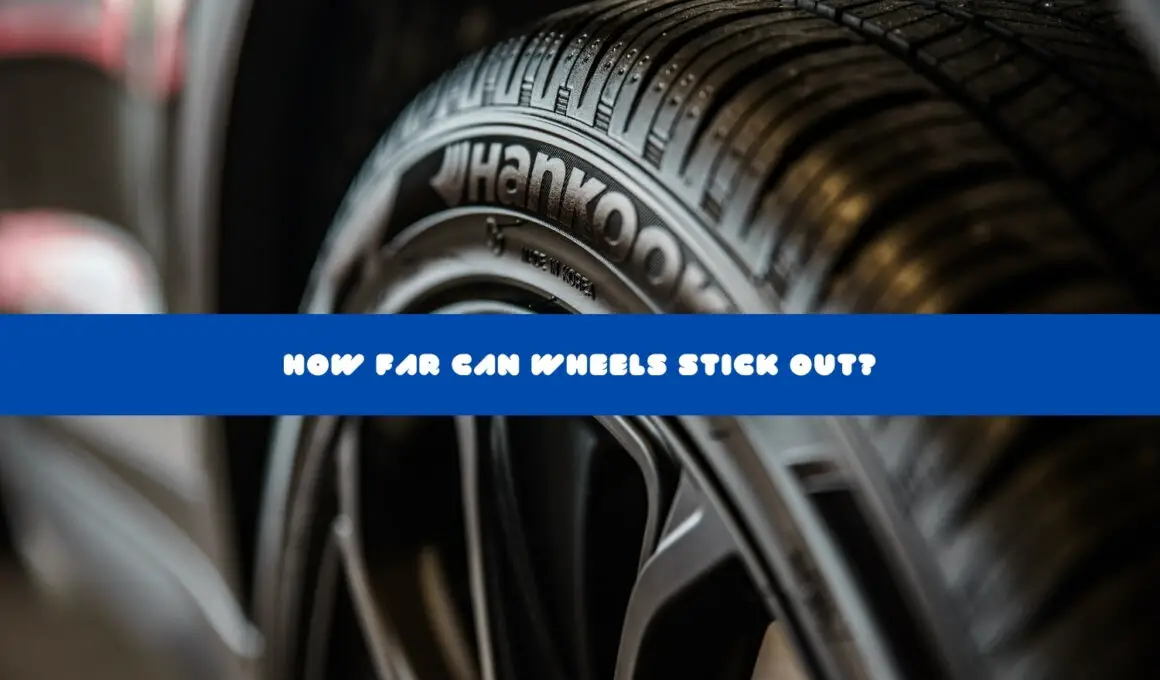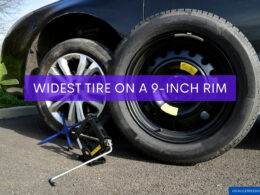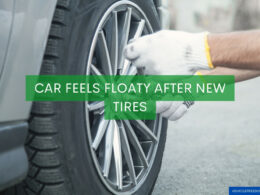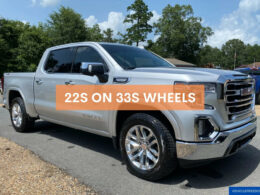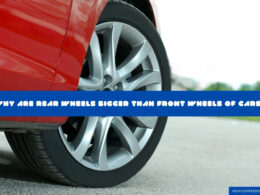In This Article Show
Many car/truck enthusiasts would like to do what cool kids do! That’s why you came to this site to figure out how far the wheels can stick out.
How far can wheels stick out depends on the legal status of the state/country and the technical side of the vehicle. Technically, cars/trucks can achieve negative offset wheels as long as the fitment is not an issue, the usual pressure on axles and bearings, and fewer effects on the driveline.
As an engineer, let me help you uncover the technical and legal aspects of this concern with the possible consequences of doing so.
Are wheels allowed to stick out? The legal side
First and foremost, it doesn’t matter if your vehicle is technically capable of running on much wider wheels; you must obey the laws of the land.
Here’s a summary of what I found about Fenders or splash aprons from The Revised Code of Washington 46.37.500.
You cannot operate any motor vehicle, cargo extension, trailer, or semitrailer if it isn’t equipped with the following.
- Fenders.
- Covers.
- Flaps.
- Adequate splash apron to reduce water or mud spraying or spraying from the road to the rear of the vehicle.
All aforementioned devices must be as wide as the tires behind on which they are mounted and extend at least down the middle of the axle.
According to the Washington 446.37,500 revised code, there is some relief for the following vehicles. But these vehicles should use and drive during fair weather conditions on hard-surfaced and well-maintained roads.
- A motor vehicle that is not less than forty years old.
- A street rod vehicle that is primarily owned and operated as a collector’s item.
Further, Washington Administrative Code 204-10-022 has provided some additional details.
Here is a brief summary of the Washington Administrative Code 204-10-022.
Fenders: You need to ensure that all wheels of your motor vehicle are equipped with fenders designed to cover the whole tire tread width that contacts the road surface.
Coverage of the tire tread circumference: You need to make sure that the coverage of the tire tread circumference meets the following specifications.
- It must be from no less than 15 degrees in front and to at the minimum of 75 degrees to the rear.
- The angle must be measured from the verticle centerline at each wheel from the center of the wheel rotation.
Tire contacts: Under no circumstances should the tire touch the body, suspension, chassis fender, or of the vehicle.
Also, the following vehicles don’t need to be equipped with fenders when in use and when driving on well-maintained, hard-surfaced roads in fair weather. (The following vehicles must be over 40 years old and primarily owned and operated mainly as a collector’s item.)
- Kit vehicles.
- Street rods.
Always be sure to read the relevant documents of the state legislature where you live.
I wish I could help you find those relevant legal documents with a nice table. But, it’s a tedious task to cover all the states and add the links of those relevant documents in a nice table.
Instead, try searching for something like “State Legislature for Vehicle Fenders in + your state” or “State Legislature for splash aprons in + your state” on Google.
OKAY, THAT’S ENOUGH! LET’S HEAD OVER TO THE TECHNICAL SIDE THAT EXPLAINS HOW FAR CAN YOUR TRUCK/CAR WHEELS STICK OUT.
Disclaimer: If an authorized person finds it offensive to share this public information with our audience, consider reaching us via the Contact Us page, we will remove this. However, We have cited and given credit to relevant legal articles.
How far can car/truck wheels stick out? The technical side
Here is the technical side that explains how far can a car/truck’s wheels stick out… YEP, now we are talking. Because I love the technical side as an Engineer.
But, before we get started, you should be able to take the following measurements of a wheel.
- Offset
- Negative offset
- Backspacing.
Since it is a bit difficult to show in practice in an article how to take those measurements with a wheel, Consider watching the amazing video below to understand it all.
Since having wide wheels and wheels with negative offset is essentially the same thing, for the most part, I’m gonna use the term “Negative offset” from here onwards.
But you gotta understand that there are some limits to the negative offsets associated with each specific vehicle model.
So, technically, there is no definite answer to this value as each vehicle model carries different specifications.
Thanks to their body frame and size, trucks can acquire higher negative offset values than cars.
If you want to achieve a prominent negative offset set of wheels, you must be prepared to modify your truck/car accordingly.
So, let’s understand why you should modify your vehicle in order to achieve negative offset wheels.
1. Fitment becomes an issue
Fitment can be a huge issue with negative offset wheels.
Why?
Think about it a little bit. You’re moving the pivot point so far out of the wheel, resulting in the wheel is interfering with things it didn’t before, especially when you taking turns.
So, the wheels should not be touched the parts inside the vehicle or the front and rear parts.
Also, the negative offset wheels mean that they are located under the fender. So, you gotta take into account suspensions and maybe lift the car a little bit to give sufficient room so the wheels won’t hit the fender.
If you’re a truck guy and the negative offset wheels touch the fender/bumper when taking turns, perhaps, lifting the truck at least two inches will solve your issue.
2. More pressure on axles and bearings
The wider the wheels setup, the more counter leverage you are putting on your axle and the bearings.
This is because you’re carrying a lot of weight when you got a really wide wheel setup resulting in putting a lot more stress on bearings, axles, and your driveline.
Therefore, you should take this crucial point into consideration when you are thinking about fitting a set of negative offset wheels, especially to a truck.
Then, what should you do now?
My recommendation is to stick with what your vehicle is capable of. Don’t get me wrong. That doesn’t mean you shouldn’t install negative offset wheels.
Some trucks with advanced and sophisticated engineering technologies are capable of going with extremely wider wheel setups.
Therefore, you need to understand that you cannot do everything you feel and want with your vehicle.
Consider meeting professionals and seek advice based on your specific car model/year, as wider wheels can even affect the axle, bearings, and driveline.
Because it’s so worth it to do some research prior to spending any money, time, and effort.
Also, you should choose the negative offset wheels after reading relevant state legislature documents where you live.
Suggested reading: Does rim width affect tires?
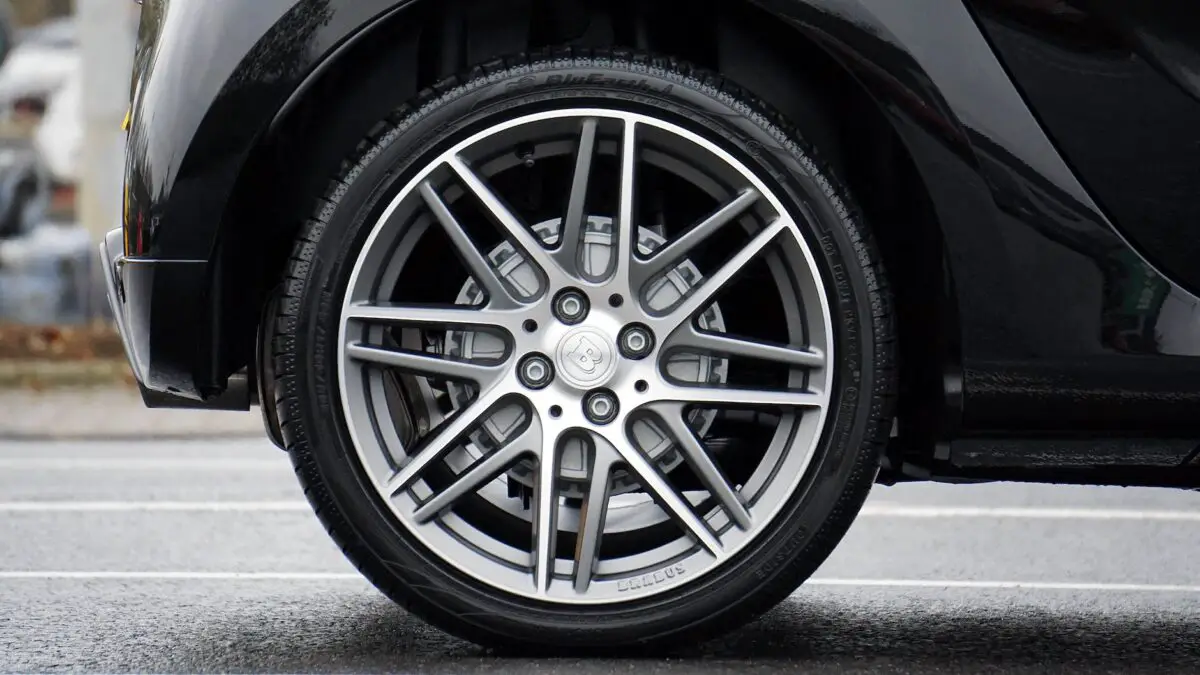
Pros of having negative offset wheels in your truck/car.
Well, there are a number of valuable reasons why would you change your wheel setup to a negative offset wheel setup.
1. More stability
Installing more negative offset wheels makes your vehicle wider as you push the wheels outwards, resulting in a more stable vehicle in turns.
Well, this is a pretty good reason to have more wider wheel setup.
2. Gives more traction
Having a wider wheel setup is extremely helpful to drive in rudder countries. A negative offset wheel setup will provide pretty good traction when driving through ruffed areas.
3. Provide a nice appearance
When you install a set of negative offset wheels, the appearance of the vehicle will be really muscular and aggressive.
Literally, a truck with a broader tire setup is fantastic.
Suggested Reading: Can smaller wheels make your car faster?
Cons of having negative offset wheels in your truck/car
Let’s see some of the reasons why you shouldn’t install negative offset tires on your truck/car.
1. The vehicle will get dirty very quickly
Because the vehicle’s wheels are sticking outside from the vehicle, the wheels will sling all kinds of junk down the side of your car/truck.
This can be mud, dirt, snow, rocks, you name it, unless you decide to go for a specific aftermarket set of fender flare to cover them up.
Frankly, not everybody is a fan of flares on such a truck/car that has a pretty good aggressive appearance. So, this is a prominent disadvantage of negative offset wheels.
2. Expensive
Going for a wider wheel setup from a zero offset wheel setup is a really costly process. Just think about it a little bit of what we’ve discussed so far.
Because you may wanna lift the body a little bit. Have to find fenders that are suitable for your vehicle.
Also, when it comes to Labor costs, that also will be significant.
3. Bigger turning radius
When your vehicle’s wheels setup is much wider, the turning radius of the vehicle will be bigger.
Most people don’t even recognize this fact, so you will face some difficulties when you want to do a U-turn. Maybe you will have to do several turns instead of doing a U-turn in one shot.
Things to be aware of
I hope now you have a crystal clear idea about how far can wheels stick out. But, there are number of other things you need to be aware of.
Obey the law: Please realize that appearance is not everything. As I mentioned earlier, consider reading and understanding the relevant State Legislature documents prior to making any changes.
Safety is number one: If you’re allowed to do such modifications, be cautious! Because you don’t wanna reduce the safety of your vehicle.
Areas of Prominent Focus: Apart from the legal side, your primary focus areas should be the following if you decide to go with negative offset wheels.
- Proper fitment.
- Pressure on the axle.
- Pressure on the bearing.
- The driveline.
Conclusion
Who wouldn’t want to drive a car/truck with an aggressive appearance? In this complete guide, we’ve discussed how far your car/truck wheels can stick out by taking into account the legal and technical sides.
Also, we’ve discussed the upsides and downsides of having higher negative offset wheels.
If you want any assistance regarding your car/truck related to this topic, consider leaving a comment below.






